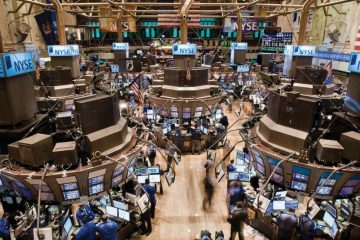Should investors diversify away from America?
IN THE MID-1980S Carol Goland spent two years in the Andes. The subsistence farmers she studied in Cuyo Cuyo, in Peru, planted as many as 20 fields scattered around the mountain. They used up precious calories going back and forth between each field. Yet on closer inspection, this pattern had a logic to it. Crop yields varied widely from field to field, because of erratic microclimates. By spreading their bets the farmers reduced their risk of starvation.
The farmers knew the penalty for failing to diversify. That lesson ought to be heeded in investing, too. But it isn’t. Three-quarters of equity funds in America are held in shares listed there, according to Morningstar, a data-tracking firm. American stocks have beaten a broad index of other rich-world stocks in seven of the past ten years. Even so, it is a lot of eggs to have in one basket. Those who seek to diversify by buying a global index find they are still heavily exposed to America. American-listed stocks account for 55% of the value of the MSCI All-Country World Index, a widely used benchmark.
When the harvest in one place has been consistently good, people are reluctant to look elsewhere. But wiser investors follow the practice of Peru’s mountain farmers and spread their bets far and wide. America’s stockmarket cannot outperform forever. When the investment climate changes, a heavy tilt towards a single country can be costly.
In principle, investors would be best off holding a broad range of equities from many countries. In practice, they have a tendency to favour their domestic market. This “home bias” is a puzzle. Domestic equities are a poor hedge against one of the biggest hazards to wealth—the loss of a job due to a faltering economy. Of course, many firms listed in America have substantial foreign earnings. But the risk-diversification they offer is still limited. Home bias, it seems, is mostly a quirk of behaviour. Investors think of foreign stocks as more risky than they really are.
In any event, it is not so easy to follow a spread-your-bets approach. MSCI’s global index is weighted by the market value of its constituents. America looms large in it. This is in part because the world’s most valuable stocks are listed there. But it also reflects the nature of business ownership. In America big companies tend to be public. In other places many are family-owned. How open a country is to investors must also be allowed for. China’s weight is tiny because its market is less accessible.
And the same question invited by those field-scattering Peruvian farmers also arises. Why bother? After all, it is America’s stockmarket that makes the global weather. Were it to crash, it would take down other markets, too. Research by Cliff Asness, Roni Israelov and John Liew of AQR Capital Management finds that in a panic, all markets get trampled. In October 1987, when American stocks fell by 21.4%, a global portfolio of 22 equally weighted equity markets fell by 21%.
Over time, however, returns are driven by fundamentals in each economy, and the global portfolio performs better than the worst-hit individual market. A portfolio that is weighted by market capitalisation, like the MSCI index, is a less potent diversifier. But it is still far better than being over-exposed to one bad market.
Those seeking the ideal balance of risk and reward should prefer to own shares of firms in proportion to their importance to the world economy. But ordinary investors should also like to keep things fairly simple. A good investment rule, then, might be to allocate a third of an equity portfolio to American stocks, a third to an index of stocks listed in other rich countries and a third to emerging-market shares. Such a portfolio would better reflect the make-up of global GDP. It would cap exposure to any one bloc. And it would anticipate a secular shift. As more emerging-market stocks are added to the global index, says Victor Haghani, of Elm Partners, America’s weight will diminish.
Investors following such a rule must sacrifice some of the ease of buying and selling American equities for somewhat less liquid markets. The other big drawback is that when American stocks do especially well, a more diversified portfolio has lower returns than the global benchmark. Peruvian farmers would be prepared to live with that. By spreading their bets, they suffered lower yields than they would have had they only planted in the best field. But they could never have been sure in advance which was the right field to pick.
This article appeared in the Finance and economics section of the print edition under the headline “Playing the field”
